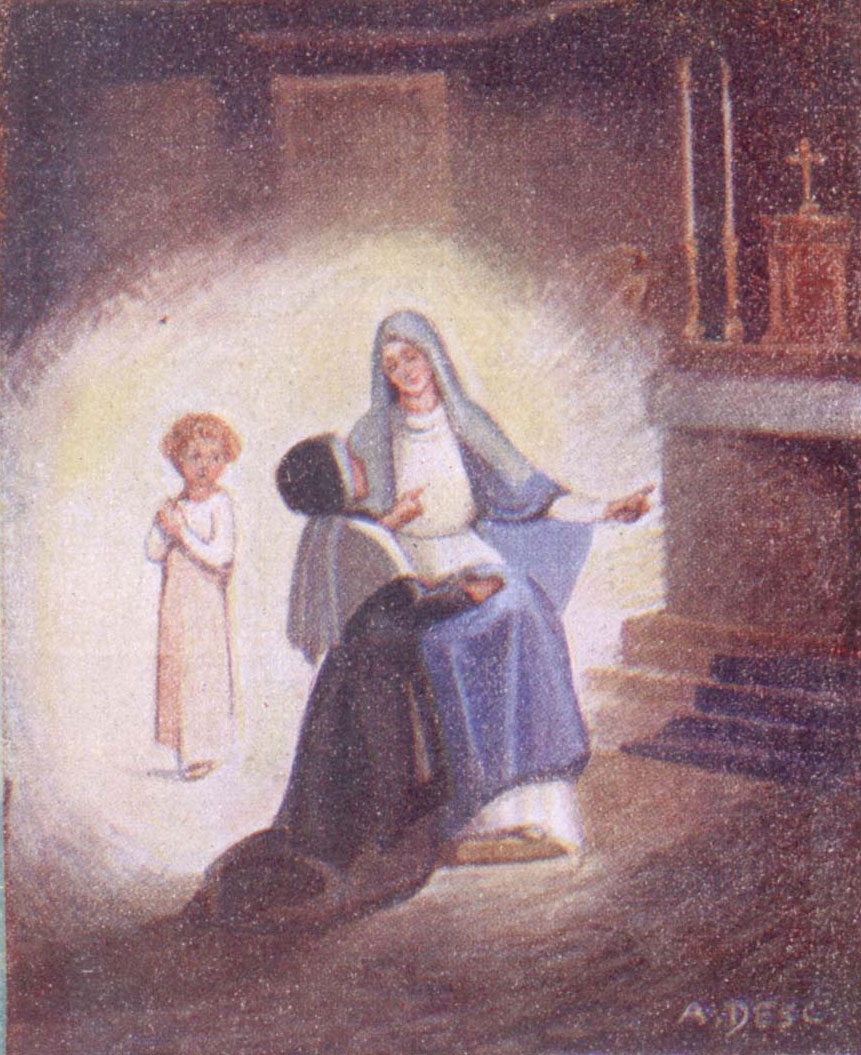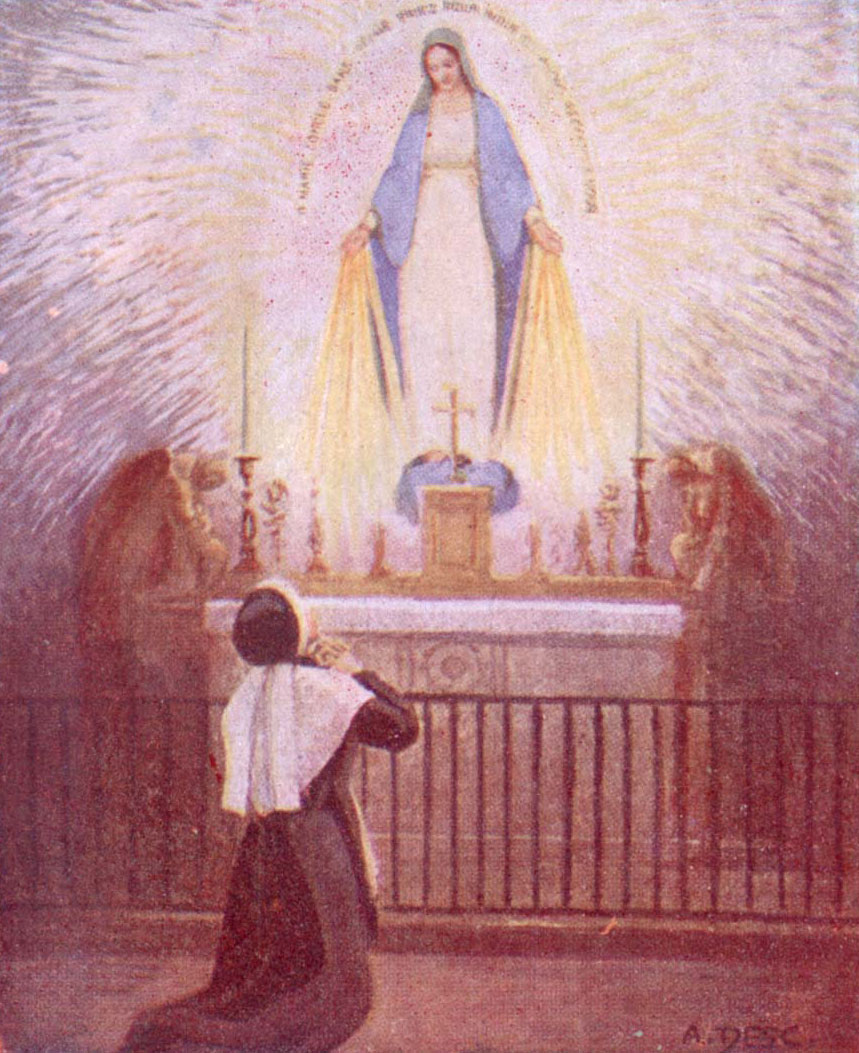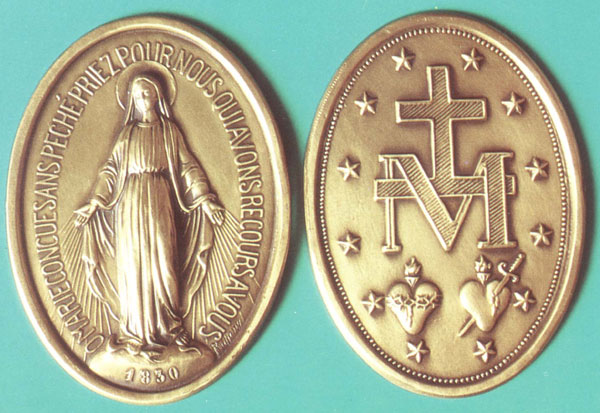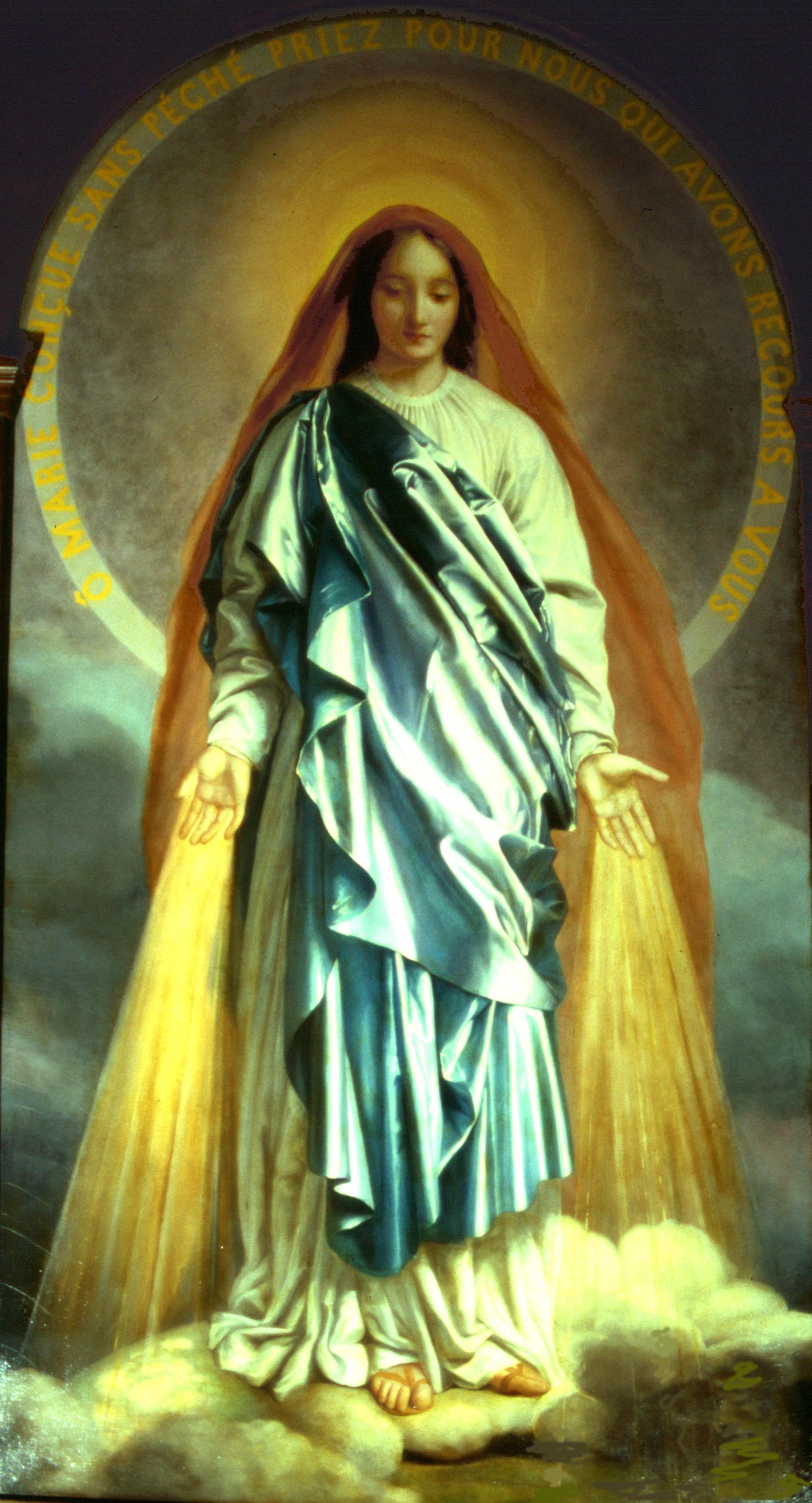History of the Apparitions
Soon afterwards, Catherine saw Christ present in the Eucharistic host. “I saw Our Lord in the Blessed Sacrament all the time of my seminary except the times when I doubted.” On June 6, 1830, the feast of the Holy Trinity, Christ appeared as a crucified King, stripped of all his adornments.

July 18, 1830
On July 18, 1830, the eve of the feast of Saint Vincent, Catherine prayed that, through his intercession, her desire to see the Blessed Virgin Mary would be fulfilled. Previously, at the death of her mother when Catherine was a child, she asked Mary to be her mother.

November 27, 1830
On November 27, 1830, the Blessed Virgin appeared to Catherine again in the chapel. This time, it was at 5:30 pm, during meditation. First, Catherine saw something like two living paintings, one fading into the other, in which the Blessed Virgin stood on a half-globe, her feet crushing the head of a serpent. In this first image, the Virgin held a small golden globe topped with a cross, which she lifted up toward heaven. Catherine then heard, “This globe represents the entire world and every person.”

December 1830
In the month of December 1830, during meditation, Catherine again heard the rustling sound, this time behind the altar. The same image of the medal appeared near the tabernacle, slightly behind it. “These rays are the symbol of the graces that the Blessed Virgin obtains for those who ask them of her…You will not see me anymore.” This was the end of the apparitions. Catherine communicated the requests of the Blessed Virgin Mary to Father Aladel (her confessor). He was not receptive to her message and forbade Catherine to even think about it. Though a terrible blow to her, Catherine obeyed her confessor.
The Medal is Promulgated
On January 30, 1831, Catherine finished her Seminary and received the habit of the Daughters of Charity. The next day, she set off for the Hospice of Enghien, which had been established by the Orléans family and was located at 12 rue de Picpus on the east side of Paris. In this impoverished neighborhood, she would serve elderly men and poor persons for 46 years quietly and in complete obscurity.
While at the Hospice of Enghien, Father Aladel remained Catherine’s Director, as he was chaplain of that institution as well. Seven months had passed since the Blessed Virgin had requested the medal be made and distributed, but nothing was done. Our Lady informed Catherine that she was displeased, because her commands had not been carried out. “But dear Mother,” said the Sister, “you see he [Fr. Aladel] does not believe me.” “Do not fear,” was the reply, “the day will come when he will do what I desire, for he is my servant and he would not wish to displease me.”
When Fr. Aladel heard this, he was very much troubled: “If Mary is displeased, it cannot be with the young Sister, who in her position is powerless to do anything, so it must be with me.” Fr. Aladel felt as though he could no longer take upon himself the responsibility of rejecting the communications made to him by his penitent. So, he consulted his Superior, Fr. Jean Baptiste Etienne, C.M., without disclosing the name of Sister Catherine, who desired to remain unknown. It was then decided that such an important matter should be submitted to the Archbishop. Accordingly, the two priests called on Archbishop De Quelen, of Paris, to whom a detailed account of the visions was given. Having listened with great interest to the wonderful story, His Grace said that he could see no objection to having the medal struck, as it was in no way opposed to the Catholic Faith; on the contrary, it was conformable to the devotion of the faithful to Our Lady. He felt it would contribute to her honor, and he requested to have some of the medals sent to him after they were struck.
Ecclesiastical authority having now been obtained, Father Aladel took steps to have the medal struck. There was considerable delay, however, and it was not until the end of June, 1832, that the first lot of 2,000 medals was received. Initially, since the Virgin Mary had promised many graces to those who wear it, the medal was called “The Medal of Our Lady of Grace.” The Director gave one of the medals to Catherine himself, as if to make amends to her for his prolonged opposition. Her only remark was, “It must now be propagated.”
In February 1832, a terrible cholera epidemic had broken out in Paris which would cause more than 20,000 deaths. After the first medals were struck that June, the Daughters of Charity began to distribute the first 2,000 medals which had been produced. Cures accumulated, as did protection from the disease as well as and conversions. It was overwhelming! The people of Paris soon began referring to the medal as “The Miraculous Medal” rather than “The Medal of Our Lady of Grace.”
By autumn of 1834, there were already 500,000 medals in existence. In 1835, there were more than one million worldwide, and by 1839, more than 10 million medals had been distributed. At the time of the death of Sister Catherine in 1876, it is estimated that over one billion medals had been distributed!



